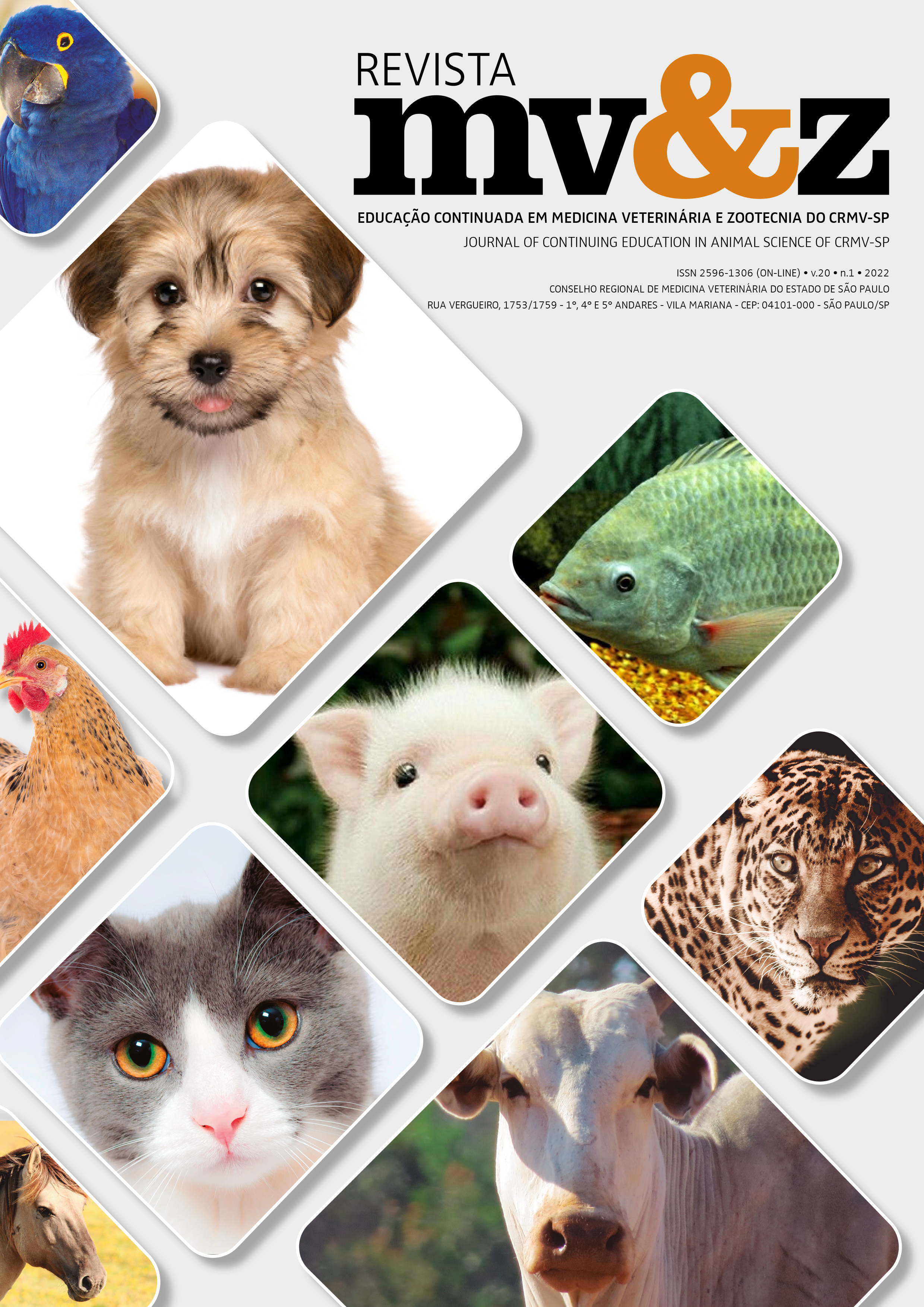Principais causas de rejeições nos bovinos, caprinos e suínos registradas nos matadouros do município de Benguela (Angola), no período de janeiro a abril de 2021
Conteúdo do artigo principal
Resumo
O presente estudo apresenta as causas de rejeições parciais e totais nos matadouros do município sede da província de Benguela, localizada a oeste de Angola, no período de janeiro a abril de 2021. Foram abatidos e inspecionados 500 animais, sendo 349 bovinos, 108 suínos e 43 caprinos. Durante três meses, foi feito o acompanhamento da inspeção post mortem, realizado pelos técnicos do Instituto de Serviços de Veterinária (ISV), autoridade competente, durante a qual se utilizou o método de observação, de registros, consulta de arquivos publicados e captação de imagens por fotografia. Foram registradas 188 rejeições parciais e totais, sendo que 38% dos animais inspecionados
apresentaram lesões nas vísceras vermelhas, principalmente nos pulmões e no fígado, 82,9% das lesões nos pulmões foram sugestivas da Peripneumonia Contagiosa Bovina (PPCB). Entre as doenças parasitárias, prevaleceram a hidatidose e a fasciolose nos bovinos e, a cisticercose nos suínos. A análise dos dados obtidos na pesquisa mostrou que a maior parte das rejeições de forma parcial nos bovinos e caprinos tiveram como causa lesões nas vísceras vermelhas, principalmente nos pulmões. Nos suínos
as rejeições tiveram como causa, a observação do Cisticercus suis nos músculos na forma generalizada.
Detalhes do artigo
Seção
1. Autores mantém os direitos autorais e concedem à revista o direito de primeira publicação, com o trabalho licenciado sob a Creative Commons Atribuição-NãoComercial-SemDerivações 4.0 Internacional
2. Autores têm autorização para assumir contratos adicionais separadamente, para distribuição não-exclusica da versão do trabalho publicada nesta revista (ex.: publicar em repositório institucional ou como capítulo de livro), com reconhecimento de autoria e publicação inicial nesta revista.
3. Autores têm permissão e são estimulados a publicar e distribuir seu trabalho online (ex.: em repositórios instituicionais ou na sua página pessoal) a qualquer ponto antes ou durante o processo editorial, já que isso pode gerar alterações produtivas, bem como aumentar o impacto e a citação do trabalho publicado (Veja O Efeito do Acesso Livre);
